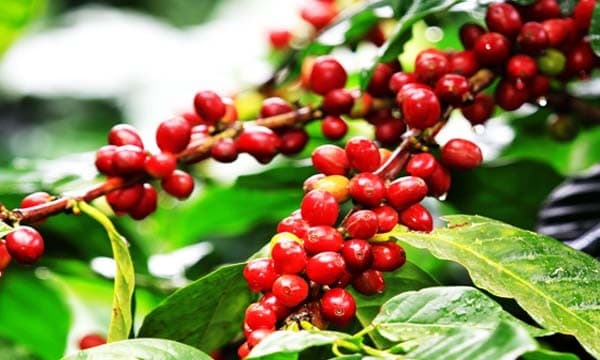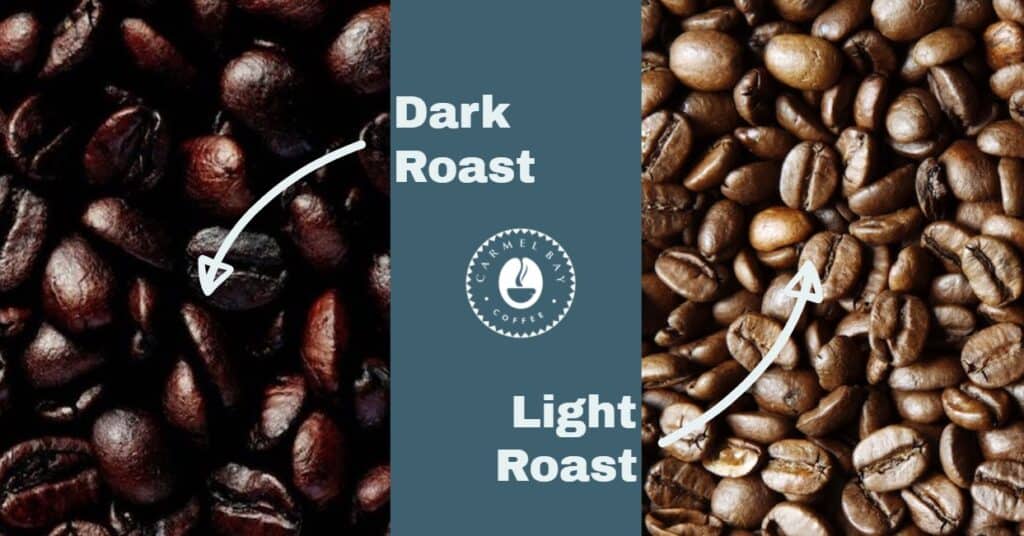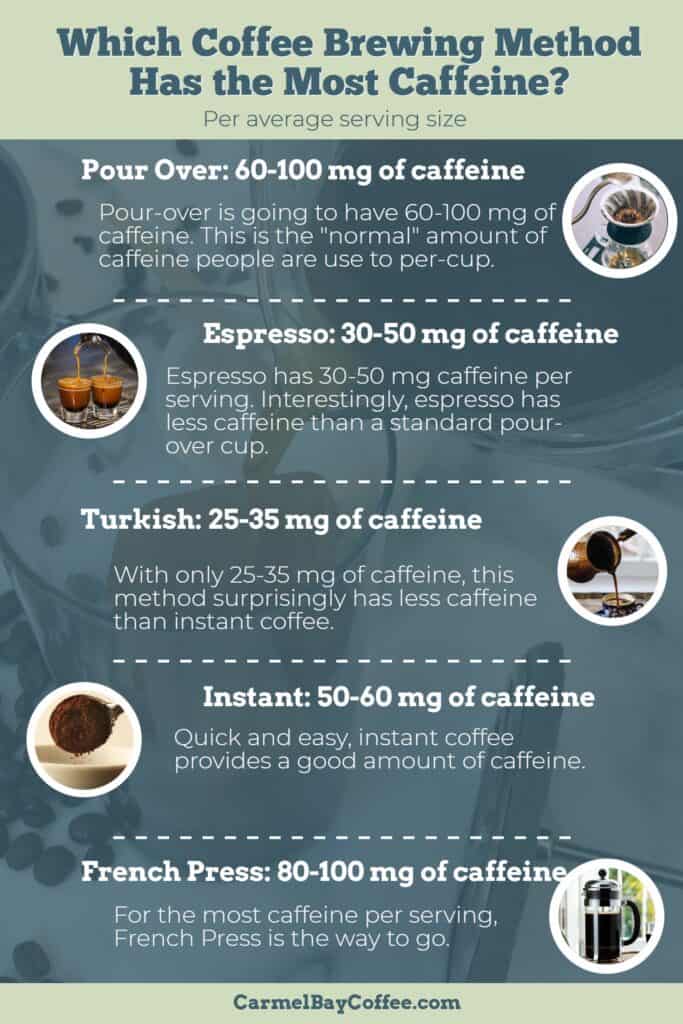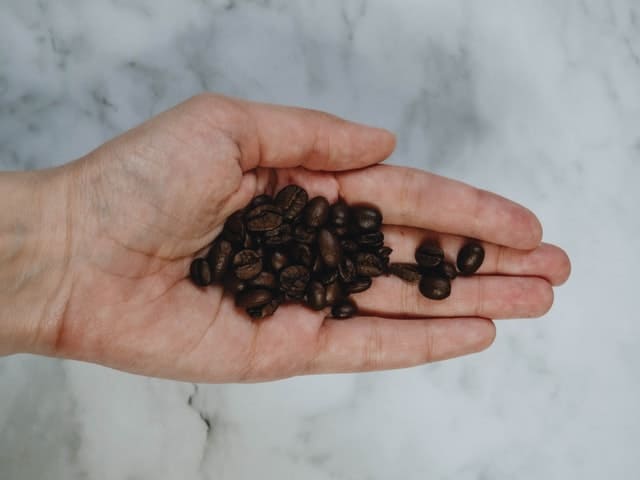When buying coffee from your favorite shop or roaster, the number of options can be overwhelming. In addition to a vast array of different roasts, from light to dark, there’s a wide range of containers coffee may be sold in.
From plastic tubs to opaque bags, it can be challenging to know the highest quality beans and what will give you the best-tasting cup. How can you tell if they are good quality coffee beans?
Although it may seem overwhelming, there’s no need to fear. There are a few key things you can look out for that will help you ensure you’re bringing home the best quality beans.
By paying attention to things like the roast date, knowing how to avoid gimmicky marketing words, and knowing the kinds of packaging to stay away from, you can rest assured that you’re buying a coffee that will make your heart swoon each morning as you take the first sip.
While coffee is a bit of a science, knowledge is your best friend – and we’re here to help you understand the basics so you can pick out the best quality beans every time!
Good Beans Start At Harvesting

While called “beans,” coffee actually comes from the seed of the coffee cherry plant. Beans are best when the cherries are ripe – if picked too soon or too early, it can alter the shape and the size of the bean, affecting the flavor.
To get the best beans for roasting, the fruit should be harvested (ncausa) when perfectly ripe.
Once harvested, beans are dried using one of two methods. In one, the cherry fruit is dried whole with the seed inside (known as the “dry method”). In the second, the pulp is removed from the fruit, and just the seeds are fermented for 12 to 48 hours. Then dried (known as the “wet method”).
After being dried, the beans are transported to be sorted.
Once there, an outer layer is moved from beans that were dried using the wet method.
Next, beans are sorted by size, and any imperfections are removed. “Flaws” can include an unusual color or other physical deficiencies. At this time, coffee is still its natural color: green. Although beans to make coffee are typically a shade of brown when brought home from the roaster, coffee gets its rich color from the roasting process.
The harvesting process includes several key steps to make sure you’re getting the best quality beans:
Ensuring the cherry fruit is ripe, making sure the “seeds” are dried correctly, and sorting the beans for imperfections. While roasting is key to bringing out different oils in the coffee, harvesting is the critical foundation to the best-quality beans.
What Makes A Good Coffee Roast

Coffee roasting, like much of the brewing process, is a bit of a science. Coffee can be a bit temperamental, so the roasting process can make or break how your coffee tastes.
Once harvested, beans are transported for roasting. In the process, beans are heated in machines at a piping 550 degrees Fahrenheit – and they’re constantly moving to ensure they don’t burn.
As the beans reach 400 degrees, a process called “pyrolysis” occurs. The beans begin to brown, and oil called “caffeol” comes out. This gives coffee its rich flavors and aromas that we all love to drink.
If you’re curious about the world of flavored coffee, take a look at our article This Is How Coffee Beans Are Flavored.
Coffee is roasted for varying lengths of time – using the terms “light,” “medium,” and “dark” to specify how long they’re roasted. This time will determine how much different flavors are let out of the beans.
Light coffees are roasted for less time and often have more complex flavor profiles. They will often taste fruity, floral, or sweet – although it can vary based on where the beans are harvested. They may also have a slightly acidic note. Because it’s roasted for less time, light roast coffees also contain the most caffeine.
You can read more about the different caffeine levels in our article here, Medium vs Dark Roast Caffeine.
While it may seem that dark roast coffee contains more of a caffeine kick, as beans are heated for a longer period, more caffeine escapes the bean. If you’re looking for the higher caffeine content, opt for a light roast.

Dark roast coffees, meanwhile, will be very full-bodied and have full, rich flavors. Notes will often be nutty, chocolatey, or toasty. As they are roasted longer, more oils are let out from the bean, bringing out more of the flavor profile.
Medium roast coffees, meanwhile, will fall somewhere in between light and dark roasts.
Beans are cooled right after the roasting process, and then the clock starts ticking to get to consumers.
The Problem With Under-Roasted Or Over-Roasted Coffee
While beans come in varying levels of roasts – like light, medium, and dark – it’s possible for beans to be under-or over-roasted.
If under-roasted, beans can taste sour or acidic. This may also cause coffee to have a “grassy” taste. This is due to the notes in green coffee beans – as the oils do not escape and more of the “raw” flavor notes come through. Check out our article all about oily beans and if they’re good or not, Why Are Coffee Beans Oily?
While a “blond” roast is popular with many coffee drinkers, under-roasted beans are the extreme version of this lightly roasted variety.
This may cause your cup to have a very strong bite that is unpleasant to drink.
Coffee beans may also be over-roasted. This will cause flavors to be overly smoky, charred, or burnt. You may even be able to see that beans have been physically charred. Using over-roasted beans may also cause your coffee to foam up.
Making sure you’re buying beans that are neither under- nor over-roasted will help you know you’re getting the best quality cup.
How Can You Tell If Coffee Is Real?
While you may think of counterfeit items as being limited to designer handbags or luxury items, believe it or not, fake coffee is a thing. I know, our hearts are breaking over such a fact. Isn’t that cruel?
Fear not, however. There are a few simple things you can look for to ensure your coffee is the real deal and you’re getting what you pay for.
Unfortunately, lower-quality coffee may be mixed with “fillers,” (thecoffeehoney) – which are used to make batches of coffee stretch farther for less cost for the company. Coffee fillers can include ground acai seeds, barley, other beans, brown sugar, corn, rice, soybeans, starch syrup, or wheat.
Researchers can use a chromatography test, which separates mixtures and measures how fast they move, to determine if a batch of grounds is genuine.
Be sure you’re buying beans directly from the roaster or from a verified retailer to avoid fillers – and steer clear of anything that makes you skeptical.
In addition to worrying about fillers in your coffee, counterfeiters may also try and mimic a company’s labels and branding. Double-checking all the spelling on the packaging, looking for “roasted” on and “best by” dates, and ensuring the brand coloring is correct are all ways you can ensure the coffee you’re buying is the real deal.
Does “Pure Coffee” Matter?

When buying beans, you’d think it would make sense to buy only beans that are “100% Pure Coffee,” right? Well, maybe not.
Although this ensures that your coffee isn’t mixed with fillers, this doesn’t necessarily mean that your coffee is high-quality. It’s all in the wording.
If a beans package simply says “100% Pure Coffee,” this may mean it’s made using a mix of different beans – rather than 100% pure Arabica, Robusta, Liberica, or Excelsa. While “100% Pure Coffee” is definitely better than a counterfeit with fillers, it can be a bit misleading.
If you’re looking to step up your Barista game, take a look at your article, Easy Ways to Level Up Your Home Barista Game!
If your coffee has a “100%” label on it, make sure it specifies what kind of beans you’re getting. A marker like “100% Robusta” is usually a better indicator of higher-quality coffee than “100% Pure Coffee.”
Roast date
In addition to making sure your coffee is roasted to perfection, you should also pay attention to how recently it was roasted. Like most foods have “best by,” or expiration dates, bags of beans will likely have a roast date on the bag. While it may seem unimportant as coffee is non-perishable, you should pay attention to how recent this was.
Over time, as beans are exposed to air after roasting, a process called “oxidation” (carmelbaycoffee) occurs. Essentially, as the oils from the beans mix with the air, it causes the coffee over time to alter the flavor profile, and it will eventually go stale.
This is similar to how iron rusts when exposed to air. It’s also why it’s essential to make sure you store beans correctly to keep your morning cup of coffee tasting as fresh as possible for as long as you can.
Ideally, beans should be used within one to two weeks of the roast date.
However, they’re suitable for a month or two after this date. It’s not necessarily that the beans will make you sick after this period – your coffee may taste very stale, bitter, or flat.
If you’re shopping for beans, pay attention to the date stamped on the package. Most roasters or retailers will rotate beans to make sure you’re buying the freshest ones, and any that are too far from the roast date doesn’t say on the shelves.
However, it’s a good idea to pay attention to the roast date – especially if you’re someone who is only buying a bag of beans once a month or every few weeks.
This will ensure you’re getting beans that have been recently roasted and will produce the best-tasting cup of coffee.
How High-Quality Coffee Tastes

High-quality coffee will have a rich, complete flavor profile. It won’t fall flat or leave weird aftertastes that have you making a sour face after taking a sip.
Cheaper-quality coffees will not have as many distinguishable flavor notes, whether floral, fruity, nutty, chocolatey, or sweet. Lesser quality coffees may also taste stale – meaning they’ve been processed or packaged oddly, or they’ve been exposed to too much air.
A high-quality coffee will have a balanced blend of different notes and will not taste too acidic or smoky. At first sip, the coffee should taste smooth. The aftertaste should be palatable and leave you wanting more.
If you find yourself making a face as if you’d just eaten a sour candy after sipping from the cup, it means your beans are likely under-roasted.
If your cup of coffee tastes smoky, beans were likely over-roasted. If the cup tastes flat or stale, it’s probably just a cheap, low-quality roast that may have been cut with fillers or exposed to too much air.
Pay Attention to Packaging
The way coffee beans are packaged can also help determine if it’s a high-quality coffee roast. If beans come in a plastic jar or can, this likely means it’s of lesser quality. Massive plastic jars or tubs with pre-ground beans will not have a controlled environment, which can quickly cause the quality of the coffee to deteriorate.
Pre-ground beans, while convenient, are also likely of lesser quality as they may have been sitting on the shelf. The coffee grounds are exposed to too much air over time.
This speeds up the oxidation process, making the gases and oils let off faster, and the beans go stale. Try getting whole bean coffee if you can, and grind just enough for each time you use it to get the highest quality cup of coffee possible every time.
Higher quality coffees will typically be sold in an opaque bag, with a small filter for gases. The opaque design ensures that no outside light will affect the beans, causing them to go stale quicker over time.
Meanwhile, the hole in the bag allows the beans to let off-gases while keeping outside air out. This is optimal for beans as they’re moved from the roaster or the retailer to your home. However, it’s necessary once you take the beans home that you transfer them to another container to ensure they’re given the most extended life possible.
Keep them away from any light or heat – and stash them somewhere like a pantry or cupboard away from the oven or refrigerator.
Wrapping Up
By knowing the key things to look for in a high-quality roast – and what to avoid in cheaper quality beans – you can make sure you’re bringing home beans that make you smile each morning as you brew your first cup of coffee.
Check out our article, How To Mix Different Types Of Beans To Create Your Own Blend!

